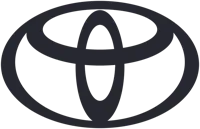Program series
House of Music has launched a new series entitled Boundless Rhythm, in which we aim to show how diverse the world of drums and percussion instruments is, and that it is possible to create complete music using only these instruments.
Jazz club for people older and younger than 100 years.
Our series Hangadó Senior is especially aimed at older participants, but of course we welcome anyone who is interested. The aim of the series is to act as a club and to playfully tell a chapter of music history in an hour-long interactive journey through time.
Language: Hungarian
Advent, the period of four Sundays preceding Christmas, is about anticipation. The days are already very short and getting shorter, while the increasingly longer nights invite us to quietness and contemplation. People prepare themselves spiritually for the turning point when darkness slowly gives way to more and more light. This is a good time to be together. That is why we invite everyone to join us on each Sunday of Advent, when we have invited a different choir from a different city to sing, so that we can prepare for Christmas together by listening to them and singing along with them.
This programme is held in Hungarian.
In addition to the popular Hangadó performances, Árpád Tóth, a singing and music teacher known for his accessible lectures, is launching a new series.
The series, entitled Under the Magnifying Glass, is aimed at those who like to delve deeper into the works: the usual 90-minute interactive lectures detail a lesser-known, great piece in many aspects, while the accessible analysis is complemented by the participation of a young, professional vocal ensemble, Capella Columbae.
SOUNDING WALKS are thematic guided events - in the permanent exhibition space - that can be visited in series, but can also be a complete event on its own. Music teacher Dóra Tápai, the lecturer of the successful Hangadó Senior music history series, will guide those interested through the halls of the exhibition according to the given topics. What we see and hear, and what is still behind it! Interesting facts, entertaining educational in an hour, after which visitors can enjoy the exhibition on their own.
Take a look around the indoor spaces of the House of Music Hungary with an expert music teacher as your guide! The best thing about our building tour is that it is not just about architecture, but also the music created and performed in the spaces! Why? Who for? How?
This programme is held in Hungarian.
The House of Music periodically shares curatorial tasks with an artist, and the next host of such a Curatorial Weekend will be Zita Szenteczki and Patrik Kelemen. They will present a performative gala show titled "Songs" filled with star guests on two consecutive evenings.
A new series entitled World Village+ is launching at the House of Music, which, as a companion to Balázs Weyer's educational music series World Village, focuses on playing music together in a workshop format.
The House of Music, Hungary is launching a new, entertaining series: music quizzes in the Pop Culture Club Library! Do your friends no longer even have to open Shazam, they immediately know just to ask you? Is Spotify one of your favourite apps? Is your Facebook wall regularly filled with fun music facts? Do you maintain carefully curated playlists? Have you ever played a newly discovered song to your puzzled friends and then had to explain, with considerable effort, what makes it such great music? If you recognise yourself in the above, then this might not be such a big secret for you, but you are a die-hard music fan! Just like us. Just for you and music gurus like ourselves, we have created the Dammit, I Knew That! quiz series, held in the Pop Culture Club Library of the House of Music, Hungary.
This program is held in Hungarian.
.jpg)

.jpg)


